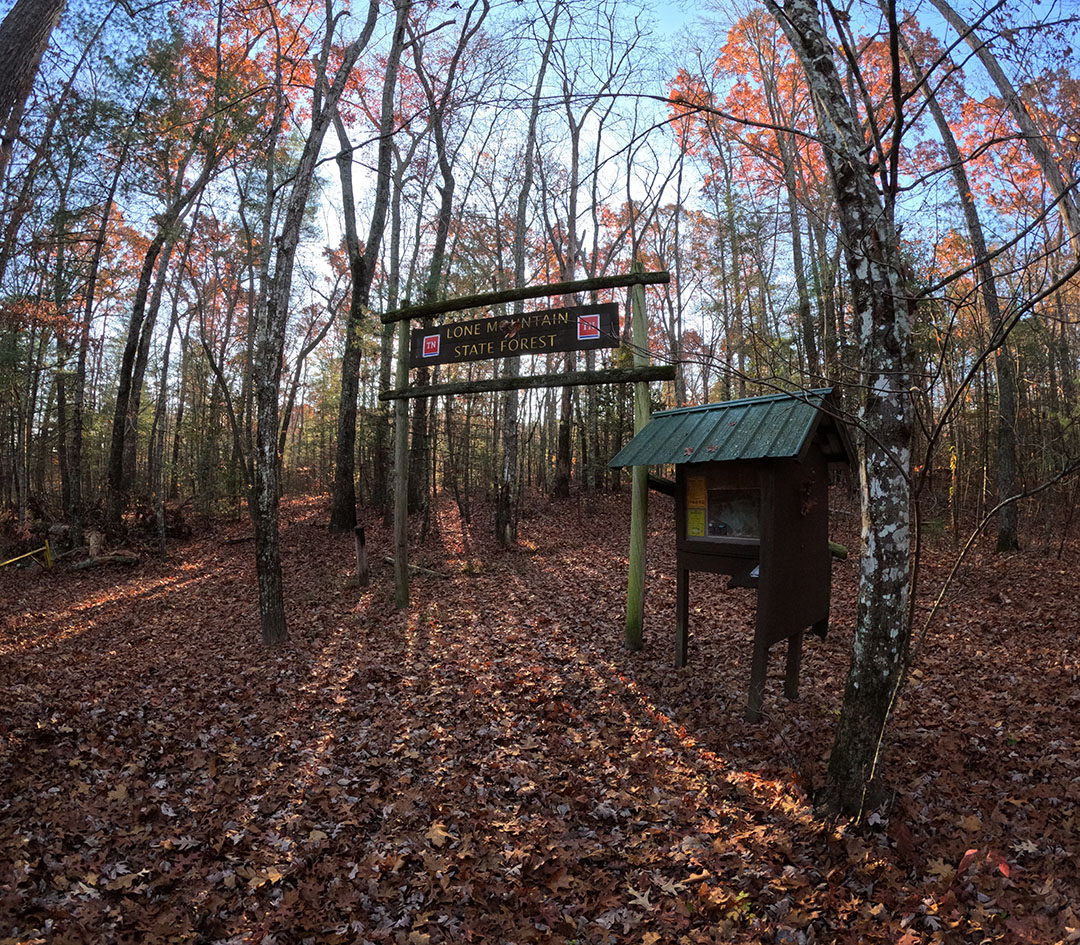| |
New projects will improve forest health and wildlife habitat
November 5, 2022; 12:21 p.m.
Lone Mountain State Forest and Catoosa Wildlife Management Area to benefit

Lone Mt. State Forest; image by TWRA |
NASHVILLE – The Tennessee Department of Agriculture’s Division of Forestry (TDF) and the Tennessee Wildlife Resources Agency (TWRA) have partnered with the Ruffed Grouse Society (RGS) to improve forest health and habitat for at-risk wildlife through forest restoration and management across the Cumberland Plateau. Visitors to Lone Mountain State Forest and Catoosa Wildlife Management Area will reap the benefits of healthy and thriving forests, enhanced wildlife viewing, and interpretive signage.
The partnership is led by RGS, which received a National Fish and Wildlife Foundation grant to implement Dynamic Forest Restoration Blocks to enhance shortleaf pine and oak forest habitat for ruffed grouse, golden-winged warblers, and other woodland and savanna-dependent species.
“Lone Mountain State Forest is a beloved location for locals and visitors to the Cumberland Plateau,” Agriculture Commissioner Charlie Hatcher, D.V.M. said. “We are delighted that of the forest’s 3,572 total acres, 383 acres will be included in this initiative. The Division of Forestry’s State Forest Unit will work with RGS to plan and implement a variety of forest management activities. Additionally, the project will help us better understand and support the habitat functions of ruffed grouse and other wildlife species.”
Lone Mountain State Forest and adjacent Catoosa Wildlife Management Area (WMA) are within the project area spanning Tennessee and Kentucky. Project partners will create, manage, and monitor areas known as dynamic forest restoration blocks to increase structural, age-class, and compositional diversity for healthy forests and abundant wildlife.
Blue flagging at Lone Mountain State Forest is evidence that inventory work is underway. During the course of this multi-year initiative, TDF’s Prescribed Fire Strike Team will implement prescribed burning on some areas of the state forest and WMA to encourage native vegetation to grow and to reduce wildland fire risk. Commercial timber harvests will also be conducted on some sites to diversify forest structure through thinning and regeneration treatments. Additional acreage will be improved through activities like controlling nonnative invasive species.
Visitors to the state forest and WMA can expect to find signs describing treatment methods and benefits. Field days are also being planned to demonstrate these practices for landowners who share similar objectives for their property. There will be little impact to existing state forest trails other than temporary closures while some activities, like prescribed burns and regeneration harvest operations, are implemented.
“Active forest management is a critical strategy for protecting and managing at-risk wildlife species,” TWRA Executive Director Jason Maxedon said. “This project will demonstrate the power of partnerships in reversing the trend of unhealthy forest conditions on much of the plateau and increase opportunities for coordinated, science-based monitoring of forest and wildlife health.”
RGS unites conservationists to improve wildlife habitat and forest health by promoting stewardship for forests and wildlife. The National Fish and Wildlife Foundation Cumberland Plateau Stewardship Fund restores native forests and freshwater habitats to conditions that will improve associated wildlife species and the health of freshwater systems while advancing strategies to support working forests.
TWRA manages more than 1.5 million acres of WMAs statewide for wildlife species and habitat management. Work on these areas is focused on conservation and the restoration of fish, wildlife, and plant resources for the benefit of all Tennesseans for generations to come. Wildlife Management Areas also support recreational activities such as hunting, fishing, bird watching, and hiking. Visit www.tnwildlife.org for WMA locations and information.
The Department of Agriculture’s Division of Forestry oversees Tennessee's 15 state forests ranging from mountain coves to bottomlands along the Mississippi River. State forests are managed for a mix of natural resources including wildlife habitat and healthy, high-quality timber. State forests offer recreational opportunities including hiking, hunting, bird watching, horseback riding, and a peaceful experience in the great outdoors. Visit www.tn.gov/agriculture/forests/state-forests.html for more information.
|

